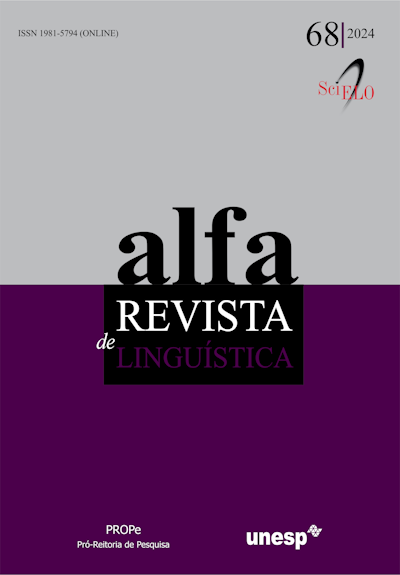Principles of structuring urban toponymy
a comparative analysis of the toponymy of the first thirty years of the City of Belo Horizonte
DOI:
https://doi.org/10.1590/1981-5794-e18222Keywords:
Toponymy, Historical Linguistics, Language Change, Belo HorizonteAbstract
In this study, a comparative analysis of the toponymy of the first thirty years of the City of Belo Horizonte is presented based on plans from two periods: the cartographic documental set of 1895-1897, composed of four plans, and the general plan of the City of Belo Horizonte organized by the 1st Section of the Sub-Directorate of Works in 1928-1929. From a theoretical point of view, this study was fundamentally based on the toponymy work of Dick (1990a, 1990b and 1996) and Seabra (2016). It was tested the hypothesis that there were relevant changes in the principles of structuring the toponymy of the City of Belo Horizonte during its first thirty years. The hypothesis was confirmed, since changes were found, in terms of principles, to be the relativization of the Principle of Uniqueness and the emergence of the Principle of Supletivity, Anthroponymic Vector, Biotopic Relationship and Resilience. Certain constants were also attested, such as the operation of the Principle of Limited Extension, Thematic Unity, Continuity and Legibility and the relativization of the Principle of Impersonality.
Downloads
Downloads
Published
How to Cite
Issue
Section
License
Copyright (c) 2024 ALFA: Revista de Linguística

This work is licensed under a Creative Commons Attribution 4.0 International License.
Manuscripts accepted for publication and published are property of Alfa: Revista de Linguística. It is forbidden the full or partial submission of the manuscript to any other journal. Authors are solely responsible for the article's content. Translation into another language without written permission from the Editor advised by the Editorial Board is prohibited.

